Composition is one of the fundamental ideas behind all art. Whether photography, painting or graphic design.
It is the word to describe how everything in your piece fits together. But photography composition is often overlooked and dismissed.
Read our complete guide here on everything you need about photographic composition.
What Is Photography Composition?
Photographers of all levels tend to worry first about their gear. Cameras, lenses, lighting set-ups, posing their models. Everything but composition.
And yet, this is what brings together their image.
The photographic composition is what separates a well-taken image from a snap-shot. There are specific composition ‘rules’ that you need to learn and consider when capturing an image or a scene.
These rules will become second nature. You won’t even think about composition. You’ll only shoot.
But for now, read through our guide, take notes, and then go out there and apply these rules of composition.

The 5 Most Abused Rules of Photography Composition
There are many different types of composition. It can be difficult to know when to use each one to boost the interest level of your image.
Sometimes photographers overuse one specific compositional rule because they have limited knowledge about the possibilities.
Other composition rules are abused, as the photographers don’t know how to use them.
One of these overused and abused rules of composition is the rule of thirds.
This is the act of placing the interest towards the corners of the image, rather than the center.
When using this rule, you need to think about your style and content.
It needs to help reiterate and portray your concept or message. If it doesn’t, it works against the image.
Read more about these abused rules of photography composition here.

Basic Composition Rules
How to Use Eye-Lines to Influence Your Viewers
Any photographs of people or with people in them will have eye lines. Unless you love the Guillotine composition (no heads), you’ll have eye lines.
This is where your subject is looking. It could be towards the camera and the viewer.
It could also be to another person or subject in the frame. Some lead you out of the frame.
Eyes in an image are our go-to place to start. We then follow their eye-line to what they are placing their focus on.
Read our article here on how to use them in your images.
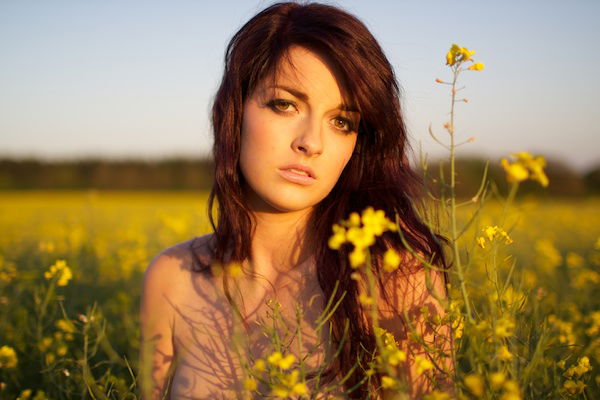
How to Choose Horizon Placement in Photography Composition
The horizon is important. At sea level, it is 86 miles to the horizon.
It is the place where the sky and the earth will always meet, and it is all around you.
So, where do you put this dominant line into your frame? Well, many people will take an image 50/50, placing the line in the center of the image.
This doesn’t place importance on either half.
It might be symmetrical. Yet it doesn’t give you anything else than the feeling of two images stuck together.
The important question is what is more interesting: the Sky or the Earth?
Read our article here to gain a better understanding. The placement of the horizon can have a powerful effect.
What is the Rule of Thirds? (And How to Use it in Photos!)
The rule of thirds is among the most essential rule of composition in photography. When you start taking photos, you get to know this rule very soon.
The rule of thirds divides the frame with two vertical and two horizontal lines. The four lines intersect in four points. To create a visually appealing photo, you should place your points of interest around these spots.
Read our detailed article on how to use the rule of thirds in photography.
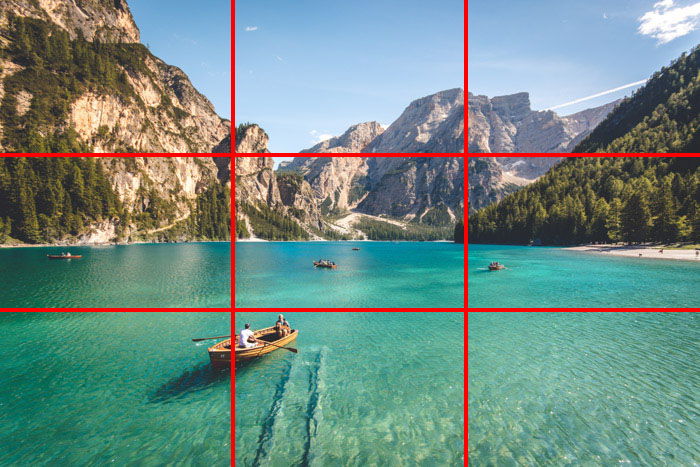
Making The Most of Line, Shape, and Form
After taking many photos, you will find every spot has lines, shapes, and forms. Some images will have more than others.
As photographers thirsty for composition, we can use these to our advantage.
Lines are the edges of a subject or an object that show the boundaries between two or more different items.
They also serve to lead the viewer’s eyes. Shape is what gives the object character.
It might be 2-dimensional. Yet the form is what makes it look 3-d through the use of shadows or perspective.
Read our article on how you can use these design elements. They make for great photography composition.

How To Use Triangles in Photography Composition
Triangles are very important shapes. Look at the pyramids for their strength and powerfulness. You will also find them in everything that you see and aim to photograph.
They are powerful as they combine the techniques of lines and paths. They give the viewer the impression of stability. Or even instability.
These triangles can encompass the leading lines rule. They point towards a part of the image with interest.
Implied triangles are what you will find to be most common. The lines make up an implied shape, rather than an exact triangle.
Read our article here on how to turn them into a powerful tool of composition.
Using Visual Weight in Your Photos
The visual weight of an image is more than the sum of its parts. Every subject or object has a weight, visible in photographs of them.
By understanding the weights of objects, you can have control over them. Eyes provide very strong visual weights in images.
They are the place where we place the most amount of our attention.
Reducing the eyes in an image is to reduce the attention and focus your viewers will give a scene.
Our article goes into how using visual weight can help the compositional value of your photography.
Balance In Photo Composition
Balancing an image is a great start to a successful composition. Symmetry can be an effective way to show a balanced scene.
Right to left as seen in an architectural scene, or top to bottom which you see in a reflection. They are both powerful to draw your attention to the image.
The placement, size and visual weight of the objects in the scene is important in creating a balance. The opposite can also work.
Unbalancing a scene on purpose can cause tension. It will have your viewer searching the image for understanding or meaning.
Our article gives you all the help you need in the act of balancing.
The Hugely Important ‘Single Point’ in Composition
A great place to start with composition is focusing on capturing one subject.
This will help you focus on one subject or item. Forget about any distracting or complex arrangements.
One single point will break up a plain scene, adding interest to an area that is lacking.
What you want from having a single point comes down to your own vision and what is available to you.
Photographing a portrait is a prime example of this single point composition.
It can even work alongside the rule of thirds, placing the face towards the corners of the image. Read more about using a single point in composition for photography.
How To Use Focal Points in Photography Composition
Choosing the right focus point is crucial for composition in photography. The right focus point helps convey the message you want to tell with your photography. And helps the viewer to understand it.
Before experimenting with the focus points to improve your photography composition, you need to understand the technical part.
You have to learn how to select a focus point with your camera. And also decide if you want to shoot in manual mode or in one of the autofocus modes.
To learn how to use focus points in photography composition, read this detailed article.

Figure to Ground Photography Composition
Figure-to-ground is a form of composition. We can use it to differentiate between two opposing colors or contrasts.
This is a great technique to separate your subject from its background.
A photograph must be able to be ‘read’ well. We often find that the simplest images work the best.
This form of composition is taking an image of a subject in a way that gives them the greatest attention.
If you were to photograph a white dog in the snow, it would be difficult for the viewer to place their focus on the animal.
This is because the foreground and background are white. So how do we get around this?
Read our article for all the tips you are ever going to need for this composition.

Using The Golden Ratio To Jumpstart Your Photos
The golden ratio is a composition guide. It is sometimes called the Fibonacci spiral, golden spiral, phi grid, or golden mean.
It helps lead the viewer’s eye through the entire photo, leading to more captivating images.
This is based on the spirals seen in nature from DNA to waves. The ratio is 1.618 to 1.
With two pieces, if you make one 1.618 times the size of the other object, the pair of them will be pleasing to the eye.
The golden spiral suggests placing the subject on the smallest box in that spiral.
Place other prominent areas of the image on the remaining curve, wherever possible. It will lead the eye of the viewer through the image.
Read on here how to create images that fit this interesting compositional rule.

How to Use the Golden Triangle in Photography Composition
There is another ‘golden’ rule when it comes to composition in photography: the golden triangle. It is a variant of the rule of thirds.
Instead of using vertical and horizontal lines, you will be using diagonals to divide your frame. This way, you can add a more dynamic feel to your photo.
As the name suggests, you are using triangles instead of rectangular boxes. The golden triangle is an excellent composition rule to use for portraits, and photos of roads or mountains.
To learn how to use the golden triangle, check out this article.

Creative Tips for Using Repetition and Pattern in Photography
Once you start looking for patterns, repetitions and rhythms, you’ll start seeing them everywhere. Everything has a pattern if you are close enough or far away enough to see them.
The best street photographers are apt at recognizing (and often breaking) patterns. They can be both man-made and natural.
Architectural photography is an excellent genre for finding geometrically perfect patterns. Finding the patterns and showing them off is a challenge in itself.
Read our article here on how to find and capture those defining designs.
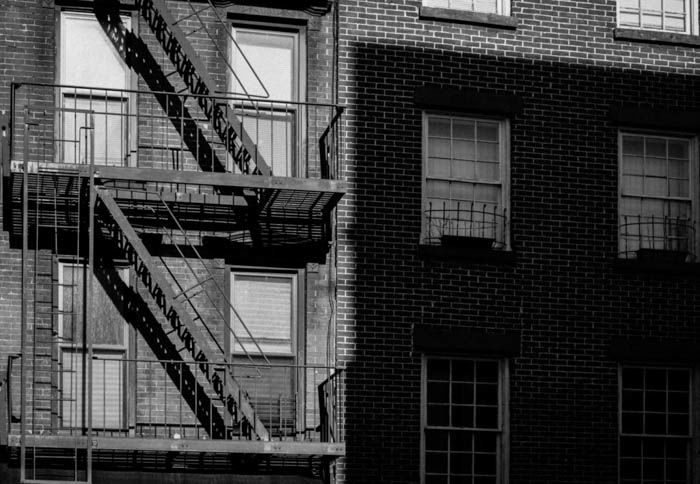
Natural Frames for Better Photo Composition
Natural framing is a valuable compositional tool in any photographer’s inventory.
It directs a viewer’s eye to the center of interest in a photograph with speed and efficiency.
They also add narrative and depth to an image, holding a viewer’s attention for longer.
Frames are everywhere we look, and photographing with a camera is using a frame already.
This composition hones your attention to the inside. This is where the most interesting subjects lie.
For all the tips on natural framing, read our article here.

How to ‘Fill the Frame’ for Better Photography Composition
In photography, the ‘frame’ is the rectangular scene that your camera captures. To fill the frame means that you make your subject occupy a large part of the photo.
Beginner photographers often leave too much space around their subjects. This might be because they are too shy to get closer to their subject. But you need to do so if you want to fill the frame.
Remember what the great photojournalist, Robert Capa said:
“If your pictures aren’t good enough, you aren’t close enough”.
But how can you learn to fill the frame and improve your composition in photography? Learn here.

How to Use Symmetry in Photography Composition
Symmetry is attractive to the human eye. We gravitate to these visual imperfections like an ant to sugar.
There is a comfort to these images. They offer a peaceful and calming mood. For portraiture, it might seem strange, but for landscapes, they work well.
By reading our article on symmetry, you’ll find the best tips on what to look for. Start here and start now!
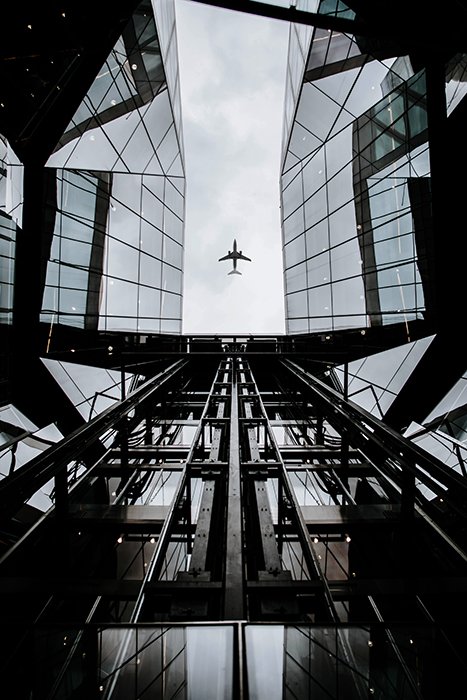
21 Important Rules of Composition in Photography
We discussed a few rules of composition already above. But there are more to help you improve your final images.
For example, you can use the rule of odds. For some reason, people find an odd number of subjects more appealing than an even number of subjects. Three is the magical number, but five and seven also work well.
Or you could experiment with negative space. It is the space between or around subjects. Negative space can highlight scale or express emotions. Therefore, filling the frame is not the only option when composing photos.
Read the other 19 important rules of composition here, and make sure to try them next time you are taking pictures.

Lines
How To Use Leading Lines
Leading lines as an arrangement tool are one of the most used by photographers. They are very important photography compositions.
You’ll find them everywhere as they are very difficult to miss.
These lines draw attention to a subject or scene. A leading line can be a path or a road, leading us off into the distance.
But where are these lines leading the viewer? They should bring you to the most interesting part of the image. To subjects, scenarios or something specific.
Read all about them here, in our extensive article.
Converging Lines
We have looked at lines in previous articles above. Those that lead your eyes to an interesting area of your image, or the edges of the objects in the frame.
These converging lines look at the bands that run alongside the image. They end in a point, far into the distance.
In street images, they run along with the image horizontally. In architecture, you’ll find them vertically.
A great way to show depth in your 2-dimensional images is to use these converging lines.
Even better if you can manage to capture many lines pointing to the same object.
Our extensive article here will help you understand and use these lines. All in the cause of strengthening your images.
How Using Horizontal Lines will Strengthen Your Composition
Horizontal lines are everywhere we look. They form the basis of many compositional rules. This is a great way to group together with many other subjects together.
It helps to give the scene a location or a direction. They also offer an impression of stability to the image as it runs parallel to the ground that we stand upon.
A horizontal line can be boring on its own, especially when unbroken. The horizon is a perfect example.
Yet when we break and intersect it with the foreground, it can add interest.
Read here on how to use these horizontal lines.
How Vertical Lines Can Improve Our Composition
Vertical lines are not as important as horizontal ones. Yet they are still good compositional tools.
Our eyes are more used to horizontal lines, moving from left to right. This is clear in how we read and look at the scenes presented to us.
Vertical lines are great at complimenting horizontal ones. They add contrast to the scene.
Our tip here is that if you are focusing on vertical lines, photograph in a vertical orientation.
This will help you convey those lines and the importance of the object.
Read our article here on how to use vertical lines to your benefit.
Fixing Composition Errors
4 Common Composition Problems
There are many different forms of photography composition to choose from. It is hard to make the right choice. Every scene needs something specific.
Some rules fit some areas, yet they won’t fit others. One of the biggest problems that people seem to have is in connection with weighted images.
Beginners tend to try and weigh both sides. What you will find it that this style of composition favours neither side. So it subtracts from the image.
You should have one side weighted heavier than the other. To learn more about common composition problems, check this article.

Food photography Composition
10 Essential Food Photography Composition Techniques
Food photography is easy. You take your camera or iPhone and snap away at the day’s eats. It is true, and Instagram already has millions of these images.
To make a photographic masterpiece, you need to know about lines, textures, and colors. These three tools are part of a larger system of photography composition.
By considering the angle and orientation of how you capture food, you can incorporate lines into your photograph.
A line is a basic element of the composition, and also powerful. They have the potential to lead your eyes to important areas of the photograph.
These can be natural, following a plate for example or created in the image with props.
Read here for all the information you will need. It also covers techniques to use the Fibonacci spiral in your food photography.

Architecture Photography Composition
10 Composition Tips for Better Architecture Photography
Architecture image capturing needs a different set of photography composition skills. Buildings come in all sorts of shapes and sizes. The composition is key in this area.
Some buildings are leading lines if you shoot from down-up. The converging lines disappear into the sky, leading your eye into a clever use of negative space.
One of the most important tips on what to look out for is to capture the details. Look closer at the building and in a way that most people wouldn’t.
A staircase captured from the top looking down makes for a great composition. Read here for more architecture photography composition tips.

Street Photography
10 Street Photography Composition Tips
Street photography is no different when it comes to what makes a photograph work.
Whether it’s people or buildings, photography composition is at the root of a great capture.
One of the tips that we can offer you is to use patterns. As humans, we identify patterns.
Our eyes get drawn to them. That is half the battle won.
The great thing is that patterns are everywhere, and come in all sorts of sizes and shapes.
Their repetitive nature makes for an interesting addition to your street photography.
For the other nine tips, read our extensive article here.

How to Use Negative Space in Photography for More Powerful Images
Negative space refers to the area that surrounds the subject(s) in your image. The technique of using negative space is about creating the right balance.
Here, you concentrate on the relationship between the subject(s) and the background. You can make the background almost feel like it is receding away.
Positive space refers to the primary subjects of a photograph. Positive and negative space can dance well together.
For more information on how to create and use negative space, read our article here.

Travel Photography
8 Photography Composition Techniques to Improve Your Travel Photos
Travel photography is a mixture of documentary, street, and landscape photography. Among these, you’ll also find portraits and architecture.
There are compositional techniques that fit all these elements. One of the best ways is to change your perspective.
Get high and look down, or start low and look up. They might be the best images of your trip. For more ideas, read on here.

Landscape Photography Composition
13 Must-Know Tips for Better Landscape Composition
You find a stunning landscape, hike for hours, take the shot. And it doesn’t look near as impressive as in reality.
This is a common problem, and there might be a quick fix. Think about your composition first, all other settings later.
A change in your composition might help turn that scene into something beautiful.
Read all the tips you’ll ever need for landscape photography.
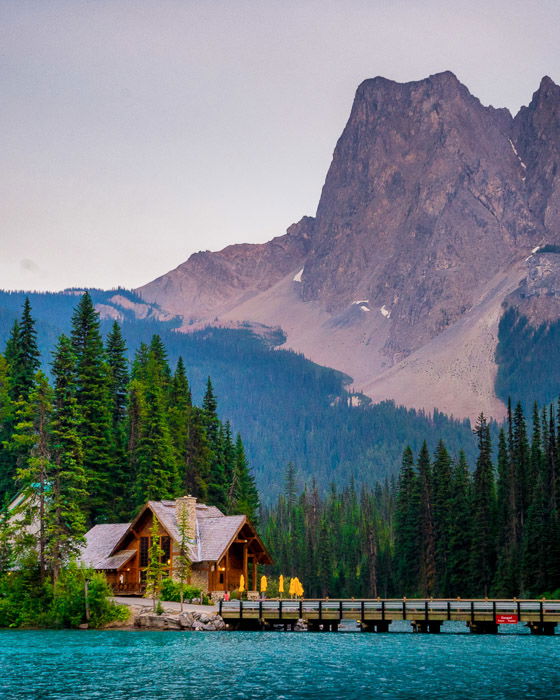
Fashion Photography Composition
10 Composition Tips for Better Fashion Photography
All genres and fields of photography benefit from the right composition. The trick is to experiment and find the right ones for the scene.
This is true for fashion photography as well. It will all depend on the mood and concept behind the image.
You are free to follow or break any compositional guideline. As long as the subject is interesting, you can place them right in the center of the scene.
Read here for composition tips to improve your fashion photographs.

Family Photography Composition
12 Composition Tips for Family Portraits
You’ll want the best out of your family portraits. They will be for you, an extended member of the family or for a client.
Compositional rules help you achieve stunning images everyone will be happy with. And you, as the photographer.
There are composition tips that might surprise you. For example, not everything has to be in the frame. You can capture a child running around their parents’ legs.
Read here the 12 most important composition tip for family portraits.

Astrophotography Composition
6 Must Know Astrophotography Composition Tips
You might think that astrophotography doesn’t need any composition. Capturing the skies above is interest enough.
How can you put a bunch of little lights in a sea of darkness in a composition? We are here to tell you how.
The sky houses more than just a few sparks. You’ll find the milky way, clusters of lights and there are even planets.
Read our list on how to frame and compose these majestic scenes.

Still Life Photography Composition
8 Still Life Composition Tips for Photographers
Following the rule of thirds or golden ratio might work wonders for landscapes. But what about still life photography?
There are different approaches to this field. You can, of course, use others. But try the ones in our list as well.
For example, using overlapping materials creates depth in your scene. It brings a 3-D and realistic quality to your images.
For more ideas, you know where to look.

Masters of Photography Composition
Alfred Eisenstaedt
Alfred Eisenstaedt was a photographer during World War II. He worked for the early version of Associated Press, then moved on to work with Time magazine.
His work has been critiqued for all the compositions he used. He used exciting composition techniques that made his images draw the viewer’s eye the way Eisenstaedt wanted it.
We found a great article here on the breakdown of Alfred’s work.

Henri Cartier-Bresson
Henri-Cartier Bresson was a French photographer. He pioneered the genre of street photography. His view on photography was capturing a decisive moment.
A great tip that we can take from Bresson is to try and find a likeness in your image.
Try and capture a composition that repeats itself. Or where the foreground copies the background.
The diagonals in the example here go from left to right. It is the same way our (Western) eyes move over an image or text.
It follows our natural eye movement, guiding us. Read more about the master of composition techniques here.

Breaking The Mold
How to Break the Rules of Photography Composition for Creative Results
They might sound like rules, and, heck, we even call them rules. But these compositions are more like guidelines.
Some of these ideas and concepts have been around for 2000+ years. The medium of painting helped to create and mould other forms of composition.
Others are more modern, a new take on an old, describable ideology.
Of course, you won’t get into trouble if you photograph through a tilted camera. There is no composition police.
We use these to help us create the best possible photograph you can. Get out there. Shoot, check and shoot again.
Click here to learn how to break the rules of photography composition. Because rules are meant to be broken.

How To Use a Central Composition
A central composition can work well. It helps to isolate the subject, utilizing negative space around them.
All eyes go from the edges to the subject in the center.
This also takes importance away from the background. It makes the subject in the center more powerful.
You also show the subject or object off in a symmetrical way, which is powerful enough.
Read here for more information on how a center composition can help you.

12 Unusual and Interesting Composition Ideas
The most important thing is to use your creativity. That’s how you push the boundaries of the photographic field.
It is also what gets your message out there. There is only one ‘you’, and there is no one like you. You are the sum of all your experiences.
Creativity is way more important than composition, so focus more on that. The photography composition will come later.
Check out these unusual composition ideas to find inspiration and your own style.

Conclusion
Composition is essential for becoming a successful photographer. Everyone can learn the technical part and press the shutter button. But it takes an excellent composition to turn your photographs into art.
Use our ultimate guide to photography composition and evolve from a photographer into an artist.










